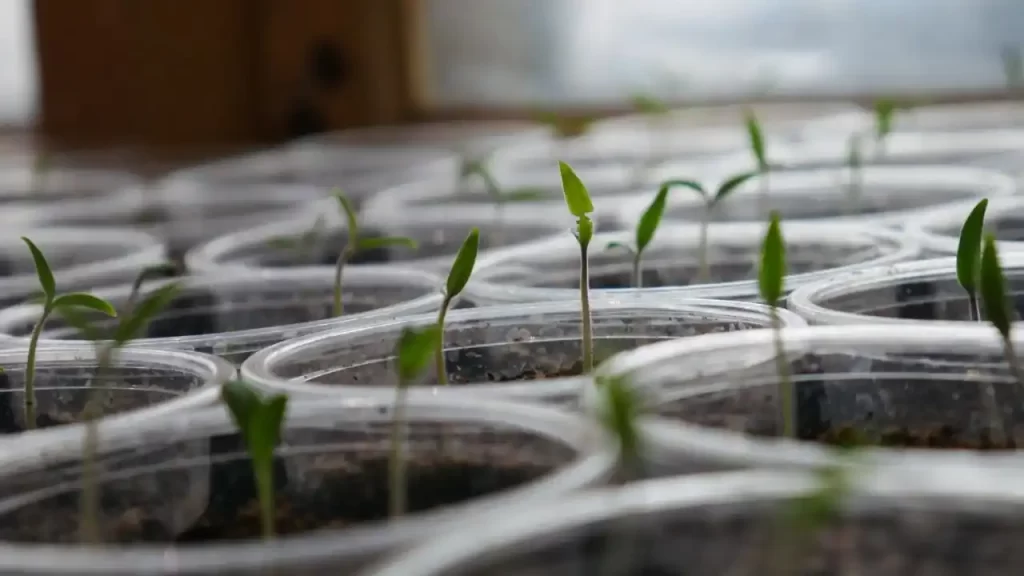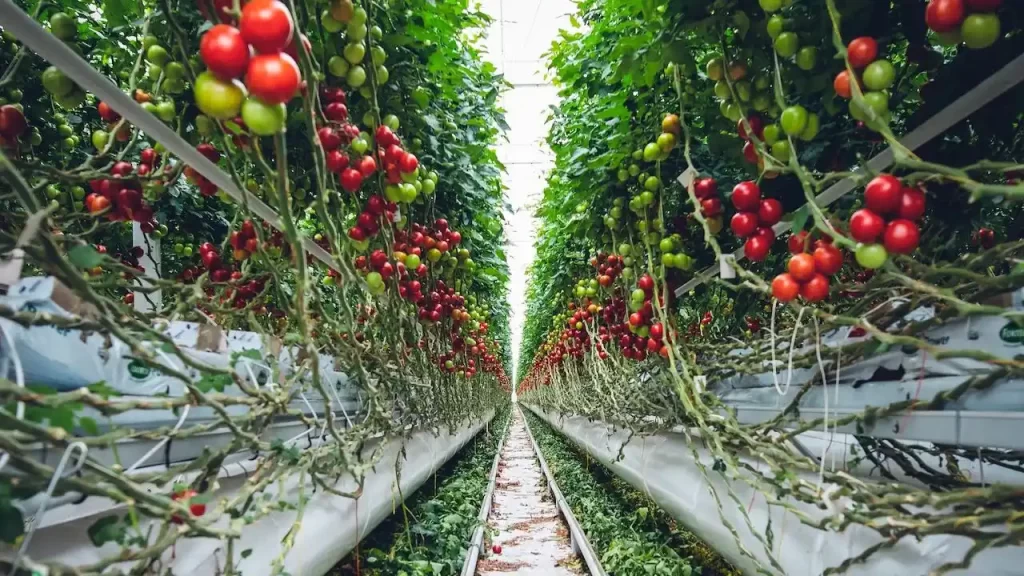Tomato has become a key ingredient in our daily cuisine. It is used in almost every dish we eat. Where do you get your tomatoes from? From the store? Think again. Why buy tomatoes from the store when you could grow better quality tomatoes at home with minimum effort? Read this blog post till the end and learn how to grow organic tomatoes at home.
Organic Tomatoes vs Conventional/Regular Tomatoes: What is the Difference?
Convention or regular tomatoes are grown with the use of synthetic herbicides, pesticides, and fertilizers. Moreover, unsustainable gardening practices are employed in producing conventional tomatoes.
While on the other hand, organic tomatoes are produced without harming the environment. Organic or natural fertilizers are used to grow organic tomatoes.
Organic tomatoes are healthier, safer, and more nutritious than conventional tomatoes. Furthermore, growing organic tomatoes at home makes you self-sufficient and can help you save some money.
Who Can Grow Organic Tomatoes at Home?

Most people don’t dare to experiment. They believe that growing organic vegetables such as tomatoes require experience and skills.
But let me tell you that anyone can grow organic tomatoes at home.
When it comes to growing nutritious organic tomatoes at home, you don’t need sophisticated tools or years of experience. All you need is some patience and a little care.
If you have these two qualities, you can produce high-quality fresh tomatoes on your very first attempt
You May Also Read: The Debate Over Vegan Eggs: How They Compare to Real Eggs
How to Grow Organic Tomatoes at Your Home
You have decided to grow organic tomatoes at home, that’s a great decision.
Where to start?
Well, growing tomatoes at home is a simple step-by-step procedure. Just follow this blog post, from start to finish, and I assure you, you will learn the art of growing organic tomatoes at home in very little time. So, here you go.
You can grow tomatoes by two methods namely from seeds and small tomato plantings.
If you are going to grow tomatoes from seeds, it is ideal to start the process indoors about 6-8 weeks before the last frost so that the plant has enough time to germinate and sprout. You may use a seed container, like the one shown in the picture below.
Fill the container with seeds and soil. Keep the soil damp, so that seeds have enough moisture.
You may also grow plants from seedlings, which is a fast, easy, and less effort-intensive technique for growing tomatoes. This method is for those who want to grow tomatoes in less time and who want to cut short the process. So, the choice is all yours.
You May Also Read: Eco-Farming Ultimate Guide: Nurturing Sustainable Agriculture for a Greener Future
What is the Best Time to Grow Organic Tomatoes at Home?
Let’s discuss the most suitable time for you to grow organic tomatoes at home.
Tomatoes are heat-loving fruits, they are best grown in the summertime when there is plenty of sunlight. The plant should get at least 8 hours of sunlight.
Tomatoes can be grown throughout the year, however, the presence of frost affects the growth.
As mentioned above start the process about 6-8 weeks prior to the last frost in your area.
Choosing High-Quality Seeds
There are about 25,000 known varieties of tomatoes; some are small, some are large, some are bush type, while others are dwarf, some are only suitable for a particular region, some take less time to harvest while other takes more time.
Some major tomato varieties include Juliet tomatoes, Sungold tomatoes, and black and cherry tomatoes. So, choose a variety that suits your requirements and geography.
After selecting the plant’s variety, the next step you need to do is collect high-quality seeds. You may collect seeds from any seed supply stores near you or order online. You may also collect seeds from your relatives or any farmer.
If you have decided to grow tomatoes from small plantings, then visit a nursery or garden near you to get healthy plantings. This method is quick and easy. But seeds are cheaper than small plants. So, it’s completely up to you.
Preparing the Soil and Planting

You have ordered the seeds or plantings. That’s great. Now, what’s next?
The next thing to do is to prepare the soil, where you will sow the seed or plant the small tomato plants. If you don’t have any open space in your home, you can also grow tomatoes in a container.
When it comes to types of soil, the good news is tomatoes can be grown in all types of soil except heavy clay. Loam and sandy loam soils are preferred choices of soils for tomatoes to grow in.
Moreover, the place where you are going to harvest tomatoes should get full sun, be rich in organic material, and it should be well-drained.
To plant seeds, you should dig the soil up to 1 foot deep and mix organic material such as manure, tree leaves, or compost before planting seeds.
After preparing the soil, you can sow the seeds or plant the seedlings. Keep some distance between two plantings, typically a 2-ft distance will work fine. After planting the seedlings, don’t forget to water them. It helps to reduce shock to the roots.
You should be generous with watering, especially in the first few days. Water is very important for tomato plants. The most recommended time for water is early morning.
Fertilizing Your Tomato Plants
To keep your tomato plants healthy, you need to take constant care and feed them with essential nutrients. If you don’t feed enough nutrients to the plant, then it might stunt growth and as a result poor yield.
You May Also Read: Top Picks: Best Farm Equipment to Purchase
One of the essential nutrients that your tomato plant needs to grow healthier is nitrogen. The plant needs phosphorus-rich fertilizer to make fruits. You need to be punctual in providing essential nutrients in the form of organic fertilizers.
After fertilizing the plants, don’t forget to water them. I’m sure you don’t want the plant to get burnt.
Pruning the Tomatoes
Pruning is an absolute necessity to ensure the best results. If you leave your tomato plants without pruning, the plant may end up with more stems and leaves than fruits.
Pruning is a smart way to achieve the best results, which most beginner gardeners miss. You are no ordinary gardener, are you? I’m sure you are not.
Here are a few pruning tips that might come in handy when growing organic tomatoes at home:
- Look for unhealthy discolored branches and leaves with visible holes. Pluck them off. Leave only those leaves on the plant that look fresh, green, and healthy. You may use a pruner to help remove the leaves at their base.
- If the temperature is extremely hot, heavy pruning is not an ideal option. The plant is shielded from intense direct sun rays by the leaves.
- Always start pruning from the base
- After the first set of flowers appears, prune any suckers or branches below it.
- Don’t prune more than one-third of the plant
Providing Support Structures to Your Tomato Plants

Tomato plants grow to a great height. Of course, they don’t have a strong stem that can support their weight. Therefore, we need to add a support structure for the plant.
You can use a stake, twine, or a tomato cage to provide support to the plant. You may use a string, rubber band, or jute to tie the plant with the support. Anything that doesn’t scar the plant should work perfectly fine.
Protection from Pest Attacks
Despite all our defensive techniques like pruning, clearing soil, watering, and fertilizing, it is hard to eliminate pest attacks. A tomato plant like other plants is susceptible to pest attacks, most commonly tomato hornworm.
I have got a couple of smart and eco-friendly techniques that can help to fight pest attacks. The first one is to attract useful insects such as ladybugs, wasps, and bees into the garden by planting flowers and herbs. Some of the flowers and herbs you may grow beside your tomato plants include Calendula, marigold, Basil, garlic, and onion.
You May Also Read: Your Ultimate Guide to the Best Biodegradable Gloves: Top 9 Picks
Secondly, you can cover the tomato plants with a garden mesh or toule. You can remove the mesh anytime you want. Plus, the mesh is super porous to let water, air, and sunlight in while also preventing access to pests.
You may also use water spray to wash off insects and dust from the plants. This technique is most effective for whiteflies or aphids (blackflies). If the pest issue persists, you may also try neem oil, soap, diatomaceous earth, or garlic barrier. You can also remove insect eggs on the leaves by hand.
Lastly, if all the above techniques fail to eliminate pests, then you can use an organic pesticide.
Common Tomato Plants Issues and Their Remedies
Your plant may show abnormalities occasionally. Here are a couple of the most common issues and their possible remedies.
You May Also Read: A Comprehensive Guide to Farm Bill 2023: The Latest Updates
a. Leaves Curling Upward and Turning Yellow
This might be serious because it is likely possible that your plant is infected with a virus. If you see a such symptom, remove the plant at once before the virus is spread to other plants.
b. Leaves are Wilting
If you see this sign, it means that your plant is thirsty. Wait until evening or early morning and water the plant. The plant will get perfectly healthy in only a matter of half an hour.
c. Cracking
Skin cracking of the fruit is another common problem; it happens particularly when the fruit growth is too rapid. Uneven watering and uneven moisture can be contributing factors to cracking.
Through mulching (maintaining moisture) and watering, you can reduce the cracking problem.
Harvesting Your Tomatoes

The good time has come. It is time to reap the fruit of your hard work and patience. It usually takes around 2-3 months for the plant to give you fruits depending upon the variety. By looking at the color and size of the fruits, you can tell whether it’s harvesting time or not. Pick the fruits when they are ripe.
You can even pick green tomatoes and keep them in a warm and safe place, where they will rip. Otherwise, if you don’t have to worry about upcoming frost or any squirrel attack, you may leave the fruit on the plant. Vine-ripened tomatoes are more flavorful and tastier than the ones harvested green.
You May Also Read: Biodegradable food Containers: An Ultimate Guide
Saving Tomato Seeds
This year you have ordered seeds from a supplier. But why you should rely on another person when you can make your seeds?
Choose the best tomatoes from your garden. Slice the tomatoes in half and extract seeds from them. Dry them and put the seeds in a jar to be used in the next season.
You May Also Read: Going Local: Unraveling the Charms of Subsistence Farming
Conclusion
Although this blog post deals with how to grow organic tomatoes at home, it can be scaled up to produce organic tomatoes on a commercial level. The process is almost identical. You may experiment with a container, and if you are satisfied with the results, you may produce tomatoes on a larger scale.
Read more blog posts from Sustainoverse


Нello! I could hɑѵe sԝorn I’ve visited this wеbsite before but after browsing through a few of the articles I realizeɗ it’s new to me.
Regardless, I’m certainly happy Ι stumbled uрon it and I’ll be book-marking
it and checking back гegularly!